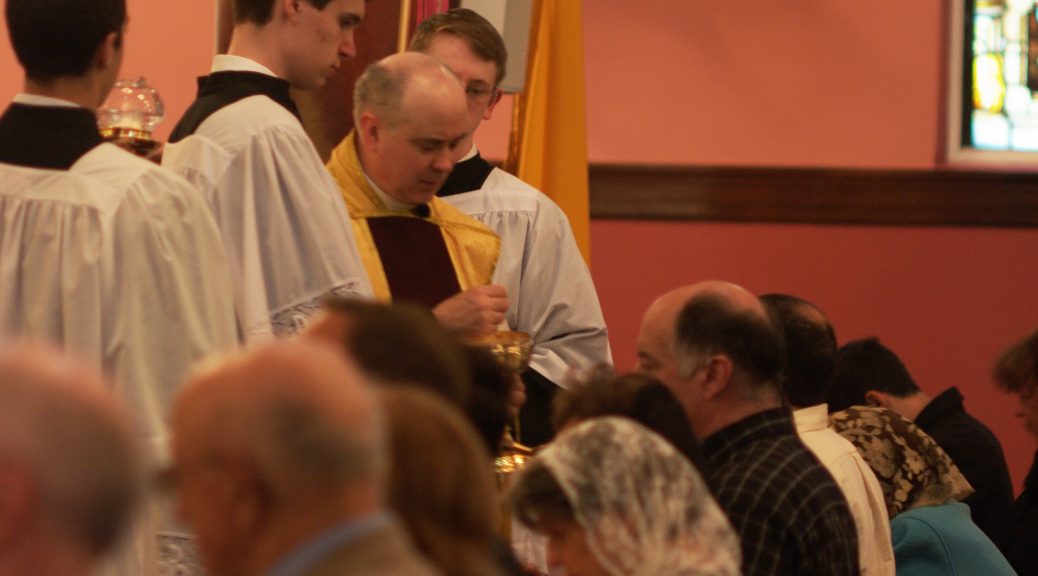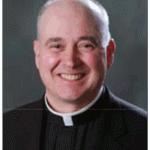First, my childhood memories of receiving Holy Communion at the altar rail: I received my First Holy Communion in May of 1969 at St. Joseph’s Church in Needham. I was eight years old. The parish School Sisters, the Sisters of Charity of Halifax, were in charge of our catechism.
I remember well the instruction we were given on how to take Communion. You were to take your place kneeling at the altar rail and not look down the rail to see where the priest was. Instead you were to pray and to think about how you were going to receive Jesus. When you heard the priest about to come to you, you closed your eyes, held your head slightly back, and opened your mouth wide enough so that the priest could place the Host on your tongue. After you received it was important for you not to move until the person next to you had also received, so as not to disturb their Communion. Then you could go back to your pew, kneel down, and continue making your Thanksgiving. It was a wonderful rite of passage for a Catholic child.
Several years later, the mid-1970’s, St. Joseph’s as with many other parishes stopped using the altar rail for Communion. We started queuing up in lines to receive Communion standing. I remember how jarring it felt. Vague explanations were given to us about the changes being in keeping with Vatican II. One such justification offered was: “We are a ‘Pilgrim People’ and so we should be standing to receive Communion.”
When I got to the Seminary in 1983 I heard the altar rail spoken of in one-sidedly negative terms as a barrier between the people and the sanctuary. This was not how I remembered it nor did it take into account the good feelings I associated with Communion at the rail.
We restored the altar rail here at Mary Immaculate of Lourdes parish in 2010. This was part of the mandate I was given by Cardinal Sean: to put in an altar rail to accommodate the Traditional Latin Mass Community coming over from the Holy Trinity German Church in Boston.
I would like to offer here a more positive understanding of the place of the altar rail than the characterizations of it as a barrier or an oldfashioned practice which has no use in today’s Church outside of Traditional Mass communities. That is the understanding of the altar rail as our place at the Lord’s Table.
In the offering of Mass upon the altar there is a movement from the Sacrifice of the Cross to the Mystical Banquet of Christ the Lamb of God. At the time of Communion the Altar of Sacrifice is now transformed into this heavenly Table of the Lord. The altar rail represents the extension of the Banquet Table to where the people come in order to receive their Eucharistic Lord. To kneel or stand at that altar rail is to take your place at the Lamb’s High Feast (“Blessed are those who are called to the Supper of the Lord!”) At the altar rail, as at a banquet table, you have other guests beside you, re-enforcing the communitarian aspects of Christianity.
It is a visually and physically striking enactment of the beautiful words of the Lord’s coming in St. John’s Apocalypse: “Behold, I stand at the gate and knock. If any man shall hear My voice and open to Me the door, I will come in to him and will sup with him: and he with Me.” (Apoc. 3:20)
Pastor’s Note from the Mary Immaculate of Lourdes Bulletin for August 20, 2017

